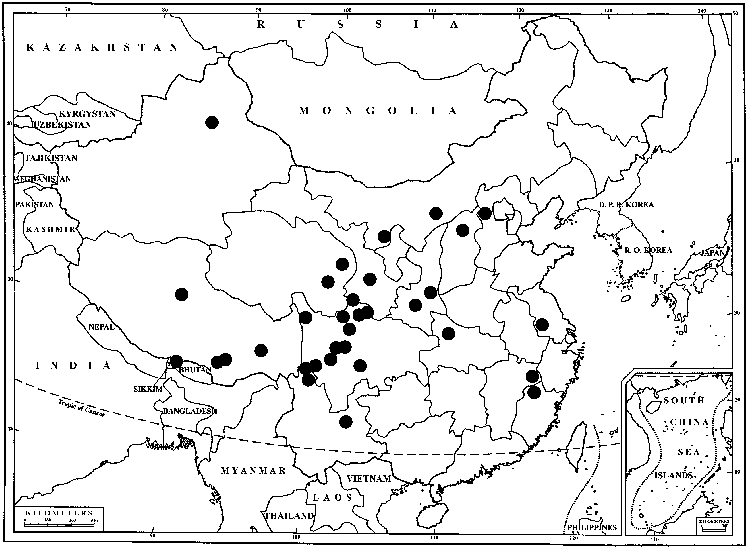Difference between revisions of "Syntrichia sinensis"
Fragm. Florist. Geobot. 37: 213. 1992,.
FNA>Volume Importer |
imported>Volume Importer |
||
| (6 intermediate revisions by 2 users not shown) | |||
| Line 6: | Line 6: | ||
|place=37: 213. 1992, | |place=37: 213. 1992, | ||
}} | }} | ||
| − | |basionyms={{Treatment/ID/ | + | |basionyms={{Treatment/ID/Basionym |
|name=Barbula sinensis | |name=Barbula sinensis | ||
|authority=Müller Hal. | |authority=Müller Hal. | ||
| + | |rank=species | ||
| + | |publication_title=Nuovo Giorn. Bot. Ital., n. s. | ||
| + | |publication_place=3: 100. 1896 | ||
}} | }} | ||
|synonyms={{Treatment/ID/Synonym | |synonyms={{Treatment/ID/Synonym | ||
|name=Tortula sinensis | |name=Tortula sinensis | ||
|authority=(Müller Hal.) Brotherus | |authority=(Müller Hal.) Brotherus | ||
| + | |rank=species | ||
}} | }} | ||
|hierarchy=Pottiaceae;Pottiaceae subfam. Pottioideae;Syntrichia;Syntrichia sinensis | |hierarchy=Pottiaceae;Pottiaceae subfam. Pottioideae;Syntrichia;Syntrichia sinensis | ||
| Line 27: | Line 31: | ||
|elevation=high elevations | |elevation=high elevations | ||
|distribution=Colo.;N.Mex.;Europe;Asia;n Africa. | |distribution=Colo.;N.Mex.;Europe;Asia;n Africa. | ||
| − | |discussion=<p>Only recently discovered in the Rocky Mountains, Syntrichia sinensis may have been overlooked elsewhere in the flora area. For example, it is to be expected in the northern part of the Sierra Nevada of California where limestone is exposed.</p> | + | |discussion=<p>Only recently discovered in the Rocky Mountains, <i>Syntrichia sinensis</i> may have been overlooked elsewhere in the flora area. For example, it is to be expected in the northern part of the Sierra <i>Nevada</i> of California where limestone is exposed.</p> |
|tables= | |tables= | ||
|references= | |references= | ||
| Line 36: | Line 40: | ||
-->{{#Taxon: | -->{{#Taxon: | ||
name=Syntrichia sinensis | name=Syntrichia sinensis | ||
| − | |||
|authority=(Müller Hal.) Ochyra | |authority=(Müller Hal.) Ochyra | ||
|rank=species | |rank=species | ||
| Line 50: | Line 53: | ||
|publication year= | |publication year= | ||
|special status= | |special status= | ||
| − | |source xml=https:// | + | |source xml=https://bitbucket.org/aafc-mbb/fna-data-curation/src/2e0870ddd59836b60bcf96646a41e87ea5a5943a/coarse_grained_fna_xml/V27/V27_911.xml |
|subfamily=Pottiaceae subfam. Pottioideae | |subfamily=Pottiaceae subfam. Pottioideae | ||
|genus=Syntrichia | |genus=Syntrichia | ||
Latest revision as of 21:29, 5 November 2020
Stems 4–15 mm. Leaves longitudinally folded and spirally twisted around the stem but little crisped when dry, wide-spreading when moist, oblong-lingulate to spatulate, 2–4.5 × 0.6–1.6 mm; margins revolute in the proximal 1/2, entire; apices acute; costa excurrent into a smooth to slightly toothed, hyaline awn, brown or reddish, smooth; basal cells abruptly differentiated, narrower toward the margins; distal cells polygonal, or quadrate, 12–20 µm, with 8–10 papillae per cell; marginal cells not differentiated. Specialized asexual reproduction absent. Sexual condition autoicous. Seta red, 15–25 mm. Capsule red, 3–3.8 mm, straight or slightly curved, with a distinct neck; operculum 1.2–1.5 mm, red; peristome 0.8–1.1 mm, red, the basal membrane pale, about 1/4 the total length. Spores 12–18 µm, papillose.
Habitat: Vertical limestone faces
Elevation: high elevations
Distribution

Colo., N.Mex., Europe, Asia, n Africa.
Discussion
Only recently discovered in the Rocky Mountains, Syntrichia sinensis may have been overlooked elsewhere in the flora area. For example, it is to be expected in the northern part of the Sierra Nevada of California where limestone is exposed.
Selected References
None.